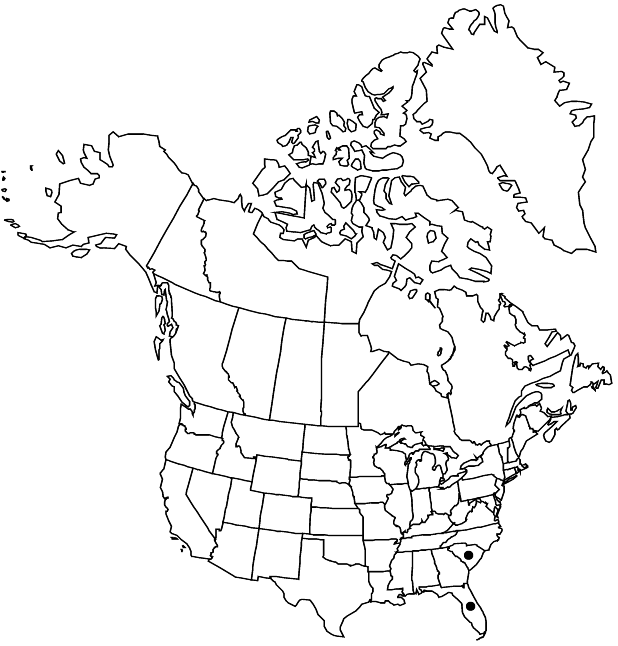Ribes echinellum
J. Arnold Arbor. 7: 148. 1926 ,.
Plants 0.7–1.5 m. Stems erect or recurving, (rooting at nodes), glabrous or, rarely, pubescent; spines at nodes 2–3, 5–16 mm; prickles on internodes absent. Leaves: petiole to 3 cm, puberulent and stipitate-glandular; blade obovate to rotund, 3-lobed, cleft 3/4 to midrib, 1–3 cm, base rounded-cuneate, truncate, or subcordate, surfaces puberulent and stipitate-glandular, lobes oblong to rounded, margins with 2–4 rounded teeth, apex rounded to broadly acute. Inflorescences spreading, solitary flowers or 2-flowered racemes, 3–5 cm, axis pilose or puberulent and stipitate-glandular. Pedicels not jointed, 1–9 mm, pilose and densely stipitate-glandular; bracts lanceolate-ovate, 1.5–2 mm, pilose, rarely stipitate-glandular. Flowers: hypanthium greenish white, tubular, 4.5–5 mm, puberulent; sepals not overlapping, reflexed, cream, oblong-rounded, 5–7 mm; petals not connivent, erect, white, narrowly oblong to narrowly oblanceolate, inrolled and appearing tubular, 2–3 mm; nectary disc not prominent; stamens 4–5 times longer than petals; filaments linear, 9–15 mm, pilose; anthers reddish pink, oblong, 0.7–1.6 mm, apex rounded; ovary with gland-tipped bristles; styles connate 3/4 their lengths, 10–20 mm, glabrous. Berries palatability not known, purplish, globose, 12 mm, spiny (spines with flattened apex).
Phenology: Flowering Mar–Apr.
Habitat: Rich woods
Elevation: 50-200 m
Distribution

Fla., S.C.
Discussion
Of conservation concern.
Ribes echinellum is known from three sites in Jefferson and Gadsen counties, Florida, and one in McCormick County, South Carolina. Q. P. Sinnott (1985) cited the glabrous style, tubular petals, and greenish sepals of R. echinellum when he disagreed with A. Berger’s (1924) inclusion of it in sect. Grossularia; studies by M. Weigend et al. (2002) and L. M. Schultheis and M. J. Donoghue (2004) support retaining R. echinellum in sect. Grossularia.
Selected References
None.